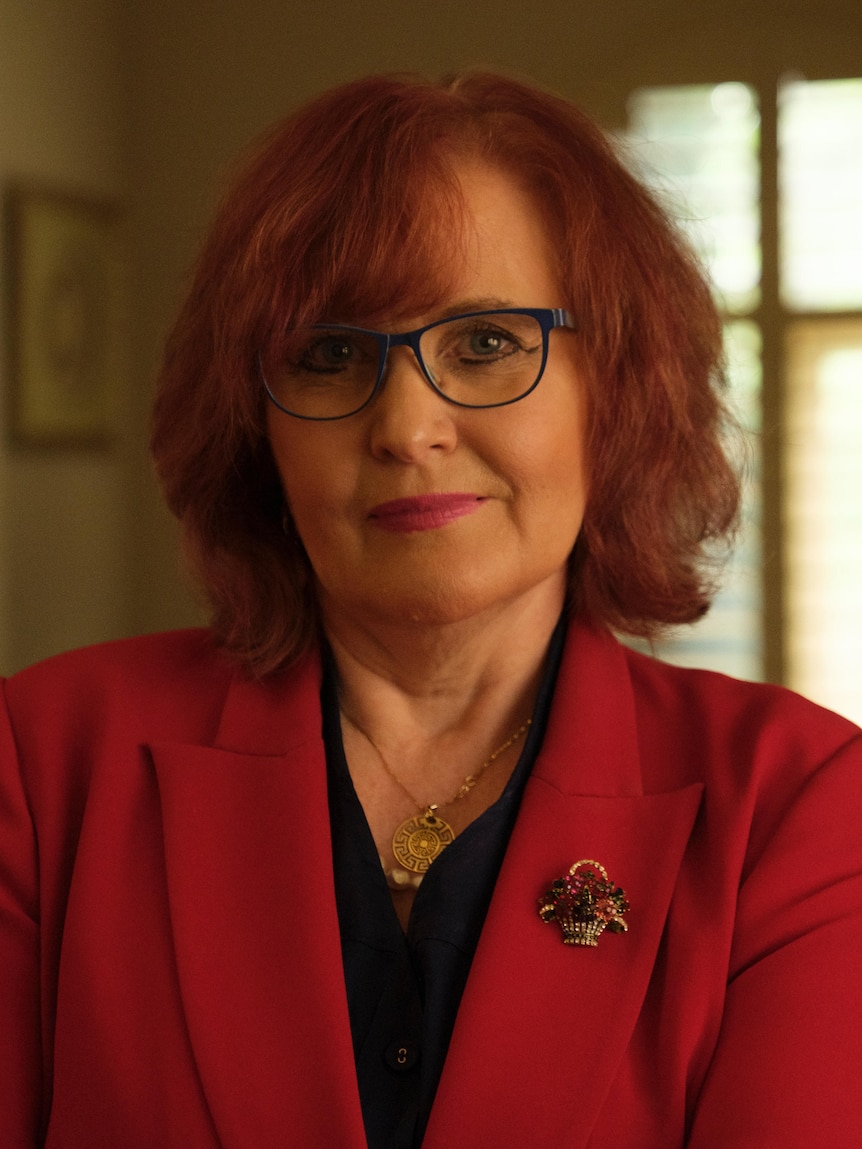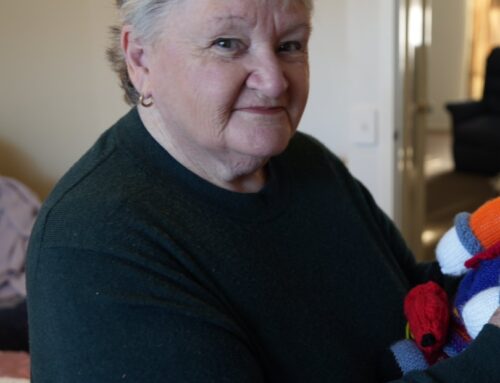When Karen Price first started working as a GP she chose a medical clinic in a lower-socio economic area of Melbourne’s south-east.
“It offered great variety, your work had a lot more scope and you were an indispensable part of the community,” Dr Price said.
But after several years, she was seeing more and more patients for appointments covering mental health, pregnancy, and women’s health issues, but wasn’t being paid the same as doctors taking on general physical health appointments.
“I was doing longer and longer consults, and watched my earnings fall because when you provide complex care, it takes time,” she said.
“It was painful to know I was working on more complex work and earning considerably less than my colleagues.”
In general practice, doctors face financial consequences for time-intensive appointments.
“I left the practice because I couldn’t maintain an income. If you want to bulk bill and provide a quality service for complex issues, you are penalised,” Dr Price said.
Dr Price, who is the immediate past president of the Royal Australian College of General Practitioners (RACGP), and other doctors nationwide argue that recent changes in GP incentivisation for bulk billing have widened the gap in Medicare payments for various appointments, exacerbating the gender pay disparity among doctors.
Bulk billing incentives not increased for mental health and antenatal care
Last year, the federal government tripled the Medicare incentive paid to GPs to bulk bill patients with healthcare cards and pension cards, and those under 16 years of age.
It means a clinic is paid a bonus of about $24 — about $20 of which is passed on to the doctor — for every patient a physician bulk bills. That payment is in addition to the Medicare rebate GP clinics receive.
Data the government released in January showed the rate of bulk billing by GPs had increased by 2.1 per cent in the first two months since the increase was introduced.
But the $3.5 billion investment excluded appointments for mental health and antenatal care — the bulk of which were taken on by female GPs, according to data collected by the RACGP.
The organisation’s current president, Nicole Higgins, said while female GPs were often spending longer with patients than their male counterparts, the system wasn’t set up to support them.
“The health system does not reward time, it rewards high throughput,” Dr Higgins said. “This sends the message that the Medicare system doesn’t value you as much.”
GPs paid less for mental health, pregnancy, women’s health
According to data from the RACGP’s Health of the Nation report, a higher proportion of female GPs see patients for mental health and women’s health compared to male GPs.
They also see a much lower proportion of physical health appointments compared to their male colleagues.
Female GPs also spend longer with patients during appointments — 20 minutes versus 16.8 minutes, on average.
|
Time spent with patients |
2022 |
2023 |
||
|---|---|---|---|---|
|
Male |
Female |
Male |
Female |
|
|
10 minutes or less |
15pc |
4pc |
9pc |
2pc |
|
11-15 minutes |
52pc |
34pc |
45pc |
26pc |
|
16-20 minutes |
25pc |
43pc |
31pc |
42pc |
|
21-30 minutes |
7pc |
17pc |
8pc |
21pc |
|
31 minutes + |
1pc |
2pc |
1pc |
3pc |
|
Average consult length |
16 minutes |
19 minutes |
16.8 minutes |
19.95 minutes |
*2023 figures exclude 6 per cent of respondents who were non-practising GPs and do not add up to 100 per cent
According to figures from Medicare, a GP clinic will receive about $191 if the doctor sees a patient with a complicated physical health problem for an hour and they are bulk billed. On top of that, Medicare pays an incentive of $24.
If the doctor sees four patients an hour for more straightforward issues, and bulk bills them, Medicare pays the clinic about $166 plus four $24 incentive payments.
But if a doctor bulk bills a patient for an hour-long mental health or antenatal patient, the clinic would only receive $79 and $52, respectively, plus an incentive payment of just $8.
Louise Stone has been a doctor for 30 years and currently works as a GP in Canberra. She said the inconsistency in billing for appointments led to female GPs earning less, solely based on the nature of the appointments they managed.
“It’s medical misogyny. The government is disadvantaging patients with mental illness or pregnancy and bankrupting female GPs,” Dr Stone said.
Magdalena Simonis has been a GP for 30 years and works in Melbourne. She’s the immediate past president of the Australian Federation of Medical Women and said she wanted to see the incentive payment increased for all types of appointments.
“It would be a step in the right direction and would acknowledge we spend more time with patients who need it,” Dr Simonis said.
“At the moment, we donate that time and therefore income.”
Dr Price now works in Melbourne’s inner suburbs, and said the difference in the incentive payment showed a bias against women’s work in medicine.
“Quality care is cognitively demanding,” she said.
That demand, coupled with the disparity in pay, was affecting the capacity of female GPs to remain in the system, Dr Stone said.
“Most of us work in other roles on contracts or salaries because we can’t pay our costs as a GP.”
Some female GPs reduce hours to cope with mental load
Michelle, who didn’t want her last name used, has been a GP in South Australia for six years and recently reduced her hours to avoid burnout.
“I realised there was a big mental load being a full-time GP,” she said.
Michelle started working at an urgent care clinic two months ago and said not only was the income better, but the work was easier.
“I feel more refreshed after a 12-hour urgent care clinic than six hours in a GP clinic,” she said.
Seeing complex patients, she said, was often an intense juggle.
“You burn out from the mental load of negotiating each consult with the time you have. You want them [patients] to feel heard but you have to manage your time.
“If you keep doing that 20 or 30 times a day your mental energy is drained.”
Michelle said she believed patients chose to see her over male doctors for complex issues because she would give them the time to talk.
“They feel more comfortable telling me things because I’m a woman. There are things that are not really within a GP’s expertise that come out — social issues, money issues. So I let them talk it out.
“You do hear patients talking about their experience with some male doctors and they say it’s over very quickly, they aren’t given enough time to speak, and that’s the gender difference in how we respond to emotional problems as women.”
Trying to ‘divvy up’ care ‘not working’
A spokesperson for federal Health Minister Mark Butler said the tripling of bulk billing incentives was applied to “the most common GP consultation items” including face-to-face and telehealth general consults of more than six minutes.
“The government has also introduced new MBS Level E consult for general services lasting 60 minutes or more, which is helping to support patients with complex physical and mental health conditions,” they said.
But Dr Stone said according to the government’s own advice sent to doctors, that was incorrect.
The government’s publicly available advice sheet said Medicare item numbers should be chosen based on the item that best describes the service.
“This means, for example, that it would not be appropriate to claim a general attendance item for mental health treatment service if it were possible to claim a dedicated mental health treatment item,” the note said.
Dr Price said the introduction of Level E proved how confusing Medicare had become.
“Trying to divvy up whole-person, longitudinal care into discreet black boxes is not working.
“Breaking Medicare into ever smaller chunks of disease and tasks is not suitable for a time-based, holistic profession. Itemisation in my honest opinion, is the wrong way to measure and count the complexity.
“They are measuring process and missing the whole. The compliance and legalese around Medicare descriptors is challenging for so many GPs.”





